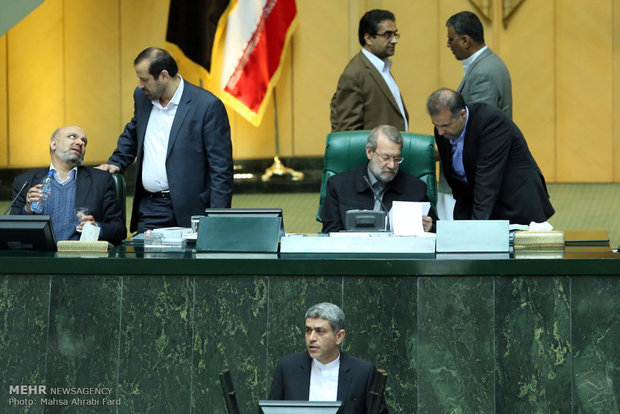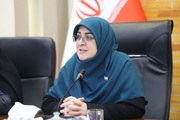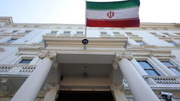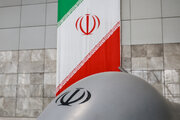At the open session of the Iranian Parliament on Monday, Javad Karimi Ghodoosi, a member of National Security and Foreign Policy Committee, raised a number of questions directed towards Iran’s Economy Minister Ali Tayebnia. The questions pertained to seizure of Iran’s assets in Canada and the US, financial corruption at Mizan Credit Institute as well as goods trafficking in customs.
Karimi Ghodoosi asserted that the Joint Comprehensive Plan of Action aimed at providing access to all frozen assets while the US and Canada seized 2 and 1.5 billion dollars of Iranian properties immediately after the JCPOA was implemented.
“Eighty billion dollars of indictment have been issued against Iran in American courts and we observe out properties being confiscated one after the other,” stressed the MP raising the question why these concerns were not tackled in the JCPOA.
Referring to President Rouhani’s remarks who said Iran’s assets were released after the nuclear deal, he stated that the country’s assets remains blocked in the US and Canada since we have no access to them.
Later at the session, Economy Minister Tayebnia presented a report on the freezing process for Iranian assets saying “on the basis of a report issued by the Central Bank of Iran (CBI), the Canadian government has never blocked our properties.”
He explained that stored bond in American banks were of two types of US and XS; “both bonds are released in dollars though America’s market has no authority over the latter.”
In view of recent year sanctions which had entered new phases, the main difficulty pertained to US bonds which were in a bigger danger, noted the official adding “as such, the Iranian government purchased 1.75 billion dollars of US bonds and 1.55 billion dollars of XS bonds.”
Clearstream Banking SA in Luxembourg, as a result of US pressures and through its Dubai office, demanded CBI not to increase its bonds in the international settlement and custody organization as well as to clarify status of its existing bonds.
Central banks sought to change classification of securities and lent them to a Libyan bank, Tayebnia continued.
He said 385 million dollars of bonds were sold within four days and 935 million dollars of them were also sold due to maturity. The authorities then also mentioned absence of customers as why the remaining bonds were not sold.
The issue was shared with an official of the previous government and a committee was formed at the Supreme National Security Council though the bonds remained unsold on grounds that CBI is an independent body whose assets cannot be seized.
“Two years ago this time, Supreme Court of the US confirmed the verdict of New York court who had sized 87.75 billion dollars of Iranian assets in 2008,” underlined the official highlighting that it was clear who the blame had to be put on.
In 2001, initial sewing against Iran took place and only two years later, the court ordered confirmation for a damage worth 2.7 billion dollars. In 2008, preliminary sentence was issued to freeze bonds while the Central Bank of Iran entered the case three years later.
Had the bonds been converted within six months, we wouldn’t be observing present difficulties,” maintained Tayebnia.
HA/3949433
























Your Comment